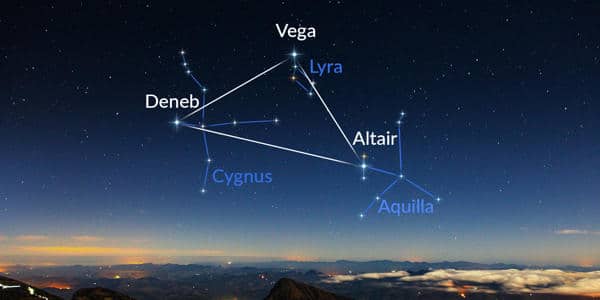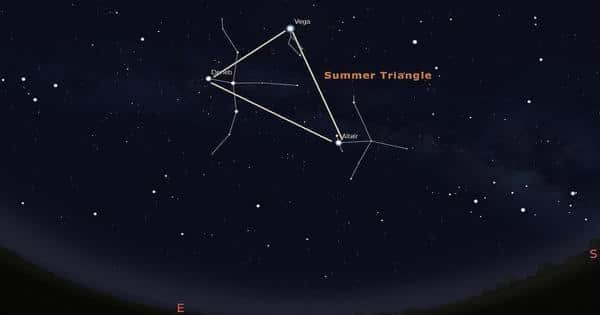Altair is a bright star in the northern summer sky and one of three stars that make up the Summer Triangle, an astronomical asterism. The star, which is located in the constellation Aquila (the Eagle), is only 16.7 light-years away from Earth, making it one of the closest stars visible to the naked eye in the sky. It is an A-type star located 16.6 light-years away from Earth. Altair rotates at a rate of more than 200 km/h (120 miles/h). With an apparent magnitude of 0.77, it is the 12th brightest star in the night sky.
Altair is the twelfth brightest star in the night sky and one of the closest stars to Earth, at only 16.7 light-years away. Altair appears to be on the main sequence, where stars continue to burn hydrogen in their cores, but it is nearly twice the size and mass of the Sun. It’s possible that Altair has begun to use helium in its core and is thus on its way to becoming a subgiant star.
Altair is the twelfth-brightest star in the night sky and one of the closest stars to Earth, at a distance of only 16.7 light-years. It is a bright star in the northern summer sky that is one of the three stars that form an astronomical asterism called the Summer Triangle.
The star is also rotating at such a fast rate — nearly 185 miles (300 kilometers) per second at the equator — that it is about 90% of the speed required to rotate fast enough to blow apart. One rotation takes approximately 9 to 10 hours. It has a flattened shape due to its fast rotation, with its equatorial diameter approximately 20% larger than its polar diameter.
Locating Altair
The Summer Triangle is an easy-to-spot asterism in the northern summer sky. The trio of stars — Altair, Vega and Deneb — are among the brightest in the night sky. Altair’s position is:
- Right ascension: 19h 50m 47.0s
- Declination: 08 degrees 52 minutes 06 seconds
Vega is the most brilliant of the three. Altair comes next, followed by Deneb, who appears much paler than its companions. This viewpoint, however, is deceptive and demonstrates the distinction between magnitude and luminosity.
Altair is closer to us than Vega, but it appears brighter. This is due to the fact that Vega emits more light; it is more luminous. Furthermore, while Altair is 112 times the size of the sun, Vega is more than three times the size.

Deneb appears one-third as bright as Vega, but it is one of the most powerful supergiant stars known. It shines approximately 80,000 times brighter than the sun, but because it is 1,467 light-years away, it does not appear as bright.
Because of centrifugal force, Altair is wider at the equator than it is at the poles, causing the star’s mass to bulge outwards at the equator. As a result, the denser poles of the star are hotter and brighter, while the less dense equator is cooler and thus dimmer. This does not imply that the equatorial region of Altair or other rapidly spinning stars is actually dark, but rather that the equatorial region is dark in comparison to the poles; this is analogous to sunspots. A sunspot would appear blindingly bright if observed alone, but it is cooler than the surrounding plasma in the Sun and thus appears dark in contrast.
Recent observations of Altair
Altair’s variability is one of its most intriguing astronomical features, though it is impossible to see with the naked eye. Observations made with the Wide-Field Infrared Explorer (WIRE) satellite in 2004 revealed fluctuations of less than a thousandth of a magnitude.
Furthermore, some astronomers have been taken aback by Altair’s movements in relation to other stars: “Though it appears to be ordinary, the star has its own distinctive features. It is moving faster than most across the sky against the backdrop of distant stars, and it will displace itself by up to a degree in only 5,000 years “Jim Kaler, emeritus professor of astronomy at the University of Illinois, wrote about it.
Astronomers were able to resolve flattening at the poles in 2006 by using long-baseline interferometry, which involves connecting several telescopes to obtain an image of the star. Altair is moving relatively fast against the background of stars and will move by as much as a full degree within the next 5,000 years.















